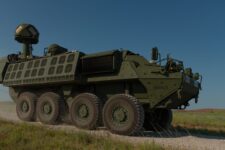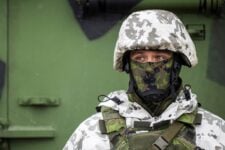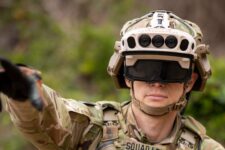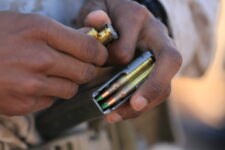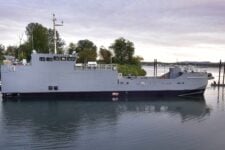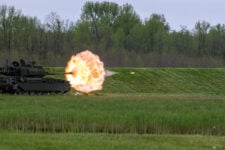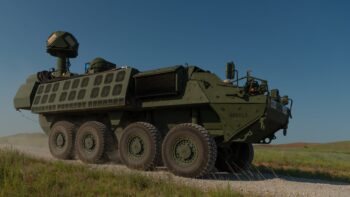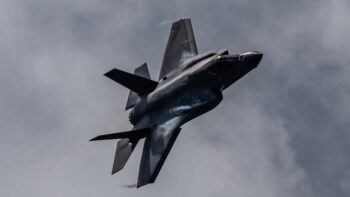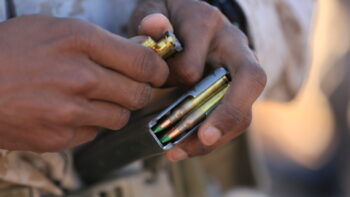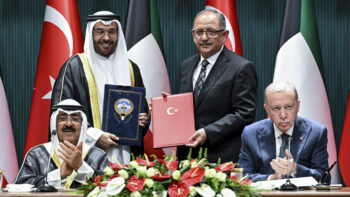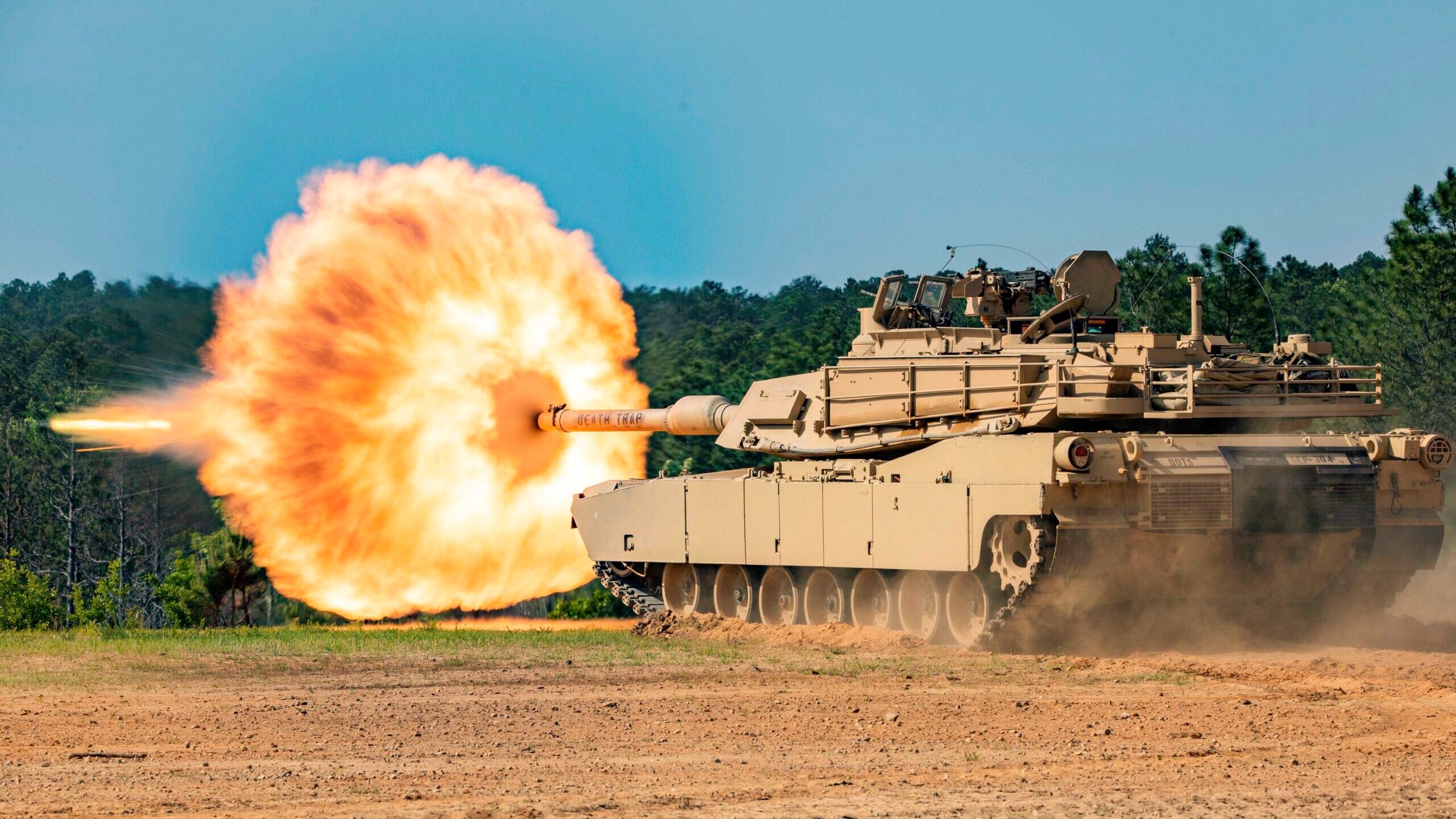
An M1A2 fires during a competition at Fort Benning, Ga. in 2022 (US Army/Spc. Joshua Taeckens)
WASHINGTON — Just days after the Army announced a new roadmap for modernizing its M1 Abrams main battle tank, a key service official is outlining capabilities the service expects to include as it seeks to address lingering questions about the crew size, and balancing lethality and survivability.
“For all the right reasons at the time, the Army had invested in [the Abrams System Enhancement Package version 4] SEPv4 development that was going to add some really impressive capabilities to the tanks [like Third Generation Forward Looking Infrared] 3GEN FLIR, a laser warning receiver, a thermal management unit and a number of other…awesome capabilities,” Brig. Gen. Geoffrey Norman, director of the Next-Generation Combat Vehicle Cross Functional Team, told an audience Tuesday at a Maneuver Warfighter Conference.
“The challenge was that [SEPv4] tank was it was going to still weigh 73.6 tons … and that created a lot of operational mobility challenges for us, and tactical mobility,” he added. “So, the inability to use some bridges… that’s problematic.”
Instead, the service now wants to keep those SEPv4 additions for its new M1E3 Abrams plan, while finding ways to reduce the tank’s weight, enhance its protection and reduce the logistics burden.
Norman did not disclose what the goal weight will be, but last year Abrams prime contractor General Dynamics Land Systems unveiled a lighter 59-ton Abrams X technology demonstrator to show the Army what an alternative path then the one it is on for the SEPv4.
In addition to cutting the tank’s curb weight, the M1E3 Abrams design will have enhanced protection to reflect lessons from the ongoing war in Ukraine, Norman said. For example, it will “integrate” an active protection system into the design instead of strapping on Israeli manufacturer Rafael’s Trophy active protection system like it has done for the SEPv3.
“That’s going to be substantially better than what we had with the installed Trophy system, which gives us great capabilities, but it’s not integrated,” he added.
When it comes to reducing the armored brigade combat team’s (ABCT’s) logistics burden, the service will likely swap out the tank’s AGT1500 gas turbine engine for a hybrid-electric option. That change, Norman explained, will enable soldiers to conduct “long-duration silent watch, have some silent mobility, [and]… have exceptional dash speed to get across danger areas rapidly.”
It will also reduce the ABCT’s fuel burden by 20 percent and, in combat, tank companies would no longer need to be refueled three times per day in combat, he said.
In addition to this trio of improvements, program officials are sorting through a host of other issues including crew size and striking the right balance between lethality and survivability.
“Are we looking at autoloaders for the tank to potentially reduce the crew size or allow for members to do different tasks? The short answer is absolutely, yes,” Norman said. “What that solution looks like, is one of those series of experiments that’s ongoing right now.”
The lethality and survivability balance, also a factor in the tank’s weight, is part of ongoing analysis process too and the service is deciding if designing new long-range precision munitions to provide a greater standoff distance would provide an avenue for cutting protection and thus weight.
“My instinct is that this tank needs to be able to survive close combat with adversaries at 100 meters,” Norman said.
“There will be other capabilities on the battlefield that can provide that long-range precision lethality and I don’t anticipate giving up that protection on the tank in order to provide that capability: If we can do both, we absolutely will,” he added.
Bringing In Soldiers
Army leaders and industry will not be answering those questions alone, but instead counting on soldier feedback and continued technology development to inform the ultimate design.
Later this month, Norman noted that 4th Infantry Division soldiers will receive “tech demonstrators” and will be asked “to make sure that we’re prioritizing the right capabilities moving forward.” Their feedback will help the M1E3 design process with a goal of having a production representative version ready for soldier touchpoints in the fiscal 2027-2028 timeframe.
If all goes according to the current plan, the first unit would receive the most modern Abrams in the early 2030s.
“There’s been a lot of investment in that [M1 Abrams] space up to this point, but we have more tech maturation to do and some more risk reduction activities to make sure that we’re getting the best solution going forward: That’s gonna go on for the next couple of years and then we’re gonna go into the [engineering and manufacturing development] phase,” Norman explained.
Army soldiers not impressed with Strykers outfitted with 50-kilowatt lasers, service official says
“They will tell you everything and they’re not worried about your feelings,” said Doug Bush.
